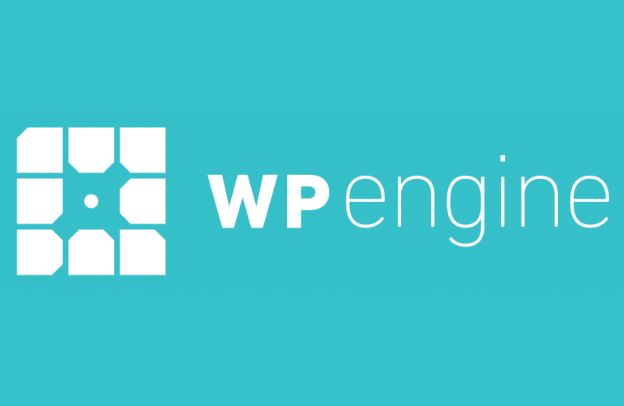5 Content Marketing Strategies And Distribution To Leverage In Your Business

I recently interviewed Lucy Muthui on the topic of Understanding Content Marketing and Distribution in Africa. As I am editing the episode, it sort of occurs to me to share some useful information with you about some Content Marketing Strategies and Distribution you can learn about in your business. I believe you will find value in it.
Want to learn more about storytelling? Start by downloading the first chapter of The Storytelling Series for Small Businesses.
Lucy Muthui is a Media and broadcast expert, a Content Acquisition and distribution Consultant, and a Communication Specialist. She is also a Project Management Expert, Business Development/Media Events Curator and Production Manager. Yes, she is also a Life Coach in the city of Nairobi County, Kenya. Her interview is coming soon.
In case you are new to it, content marketing is a powerful approach to attract and engage your target audience by creating and sharing valuable content. Now, here are five content marketing strategies and distribution methods you can learn about for your small business:
Blogging
Blogging involves creating and publishing articles regularly on your website. These articles can cover a wide range of topics related to your industry, products, services, or anything relevant to your target audience.
The key is to provide valuable and informative content that addresses your audience’s pain points or interests. Blogs can be optimized for search engines (SEO) to increase visibility and organic traffic.
Distribution for Blogging:
- Email Subscriptions: Encourage visitors to subscribe to your blog through email to receive updates.
- Social Media: Share your blog posts on social media platforms to reach a wider audience.
- Content Aggregators: Submit your blog posts to platforms like Medium or LinkedIn Articles and other platforms to reach more people.
Video Content:
Video content is highly engaging and can convey complex information in a digestible format. Create videos that educate, entertain, or demonstrate your products/services. Videos can be tutorials, explainer videos, interviews, or behind-the-scenes looks.
Distribution for Video Content:
- YouTube: The second-largest search engine after Google, YouTube is an excellent platform to host and share your videos.
- Social Media: Share your videos on platforms like Facebook, Instagram, and Twitter.
- Website Embeds: Embed videos on your website to keep visitors engaged.
Infographics:
Infographics are visual representations of data, concepts, or processes. They are easy to share and can quickly convey information in a visually appealing manner. Infographics are particularly useful for explaining complex topics.
Distribution for Infographics:
- Social Media: Share your infographics on platforms like Pinterest, Instagram, and LinkedIn.
- Guest Posts: Offer your infographics to industry-related blogs as guest content.
- Email Campaigns: Send out infographics to your email subscribers as valuable content.
Ebooks and Whitepapers:
Ebooks and whitepapers are longer-form content pieces that delve deep into a specific topic. They provide in-depth knowledge and insights, positioning your brand as an authority in the field. Ebooks and whitepapers are often used for lead generation in exchange for email sign-ups.
Distribution for eBooks and Whitepapers:
- Landing Pages: Create dedicated landing pages where visitors can download these resources after providing their contact information.
- Email Campaigns: Promote your eBooks and whitepapers through targeted email campaigns.
- Social Ads: Use social media advertising to reach a broader audience interested in your topic.
Podcasting:
Podcasting involves creating audio content that can be easily consumed on the go. You can host interviews, discussions, or monologues on topics relevant to your audience. Podcasting allows for a personal connection with your audience and can help establish your brand’s voice.
Distribution for Podcasting:
- Podcast Platforms: Publish your podcasts on platforms like Apple Podcasts, Spotify, and Google Podcasts.
- Website Integration: Embed podcast episodes on your website for easy access.
- Social Media Teasers: Create short video teasers or audiograms to promote new podcast episodes on social media.
Look at your situation and see which of the strategies above will work better in your situation. Remember that effective content distribution involves understanding your target audience’s preferences and where they spend their time online.
A multi-channel approach can help you reach a wider audience and maximize the impact of your content marketing efforts. With that said, let’s see what your business can benefit from a good content marketing strategy. I encourage you to give this a good consideration.
Why small businesses need content marketing strategies
Small businesses can greatly benefit from content marketing strategies for several compelling reasons. See the 10 reasons listed below:
- Building Brand Awareness: Content marketing allows small businesses to create and share valuable content that showcases their expertise, products, and services. This helps in building brand recognition and making the business more visible in a crowded marketplace.
- Establishing Authority: Producing high-quality and informative content can position small businesses as experts in their industry. When potential customers see that a business consistently provides valuable insights and solutions, they are more likely to trust and choose that business over competitors.
- Engaging the Audience: Content marketing offers a way to engage with the target audience on a deeper level. By addressing their pain points, answering their questions, and providing valuable information, small businesses can foster a sense of connection and loyalty.
- Driving Organic Traffic: Creating SEO-friendly content can improve a small business’s search engine rankings. When potential customers search for relevant topics, the business’s content has a better chance of appearing in search results, driving organic traffic to the website.
- Cost-Effective Marketing: Content marketing often requires less financial investment compared to traditional advertising methods. While it does require time and effort to create quality content, the long-term benefits can be significant in terms of brand exposure and customer engagement.
- Supporting Sales Funnel: Content can be tailored to different stages of the buyer’s journey. Informative blog posts, videos, and other content types can attract potential customers in the awareness stage, while more in-depth resources like eBooks and webinars can nurture leads and guide them toward making a purchase.
- Leveraging social media: Social media platforms are integral to content distribution. Small businesses can share their content on social media, which can help increase engagement, build a following, and drive traffic back to their website.
- Differentiation from Competitors: In competitive markets, content marketing allows small businesses to differentiate themselves by offering unique perspectives, insights, and solutions. This can make them stand out and attract customers who resonate with their approach.
- Long-Term Value: Quality content remains accessible and relevant for a long time. Unlike some forms of advertising that have a short shelf life, well-crafted content continues to attract and engage audiences over time, providing ongoing value.
- Measurable Results: Digital content marketing offers various tools and analytics that allow businesses to measure the effectiveness of their strategies. Metrics like website traffic, social media engagement, and lead conversions can provide insights into what’s working and what needs improvement.
In today’s digital landscape, where consumers are increasingly looking for valuable information before making purchasing decisions, content marketing has become an essential strategy for small businesses to connect with their audience, build relationships, and drive business growth.
Conclusion on 5 Content Marketing Strategies And Distribution To Leverage In Your Business
In a rapidly evolving business landscape, small businesses stand to gain immense value from the strategic implementation of content marketing. As a dynamic approach that seamlessly blends brand building, customer engagement, and cost-effective visibility, content marketing empowers these enterprises to transcend limitations and carve out their unique space.
By weaving compelling narratives, offering valuable insights, and establishing themselves as industry authorities, small businesses can foster lasting connections with their audience. They can nurture trust, and loyalty in ways that traditional advertising methods struggle to achieve.
The beauty of content marketing lies not only in its ability to attract attention but also in its potential to sustain engagement, guiding potential customers along their journey from awareness to purchase.
Want to learn more about storytelling? Start by downloading the first chapter of The Storytelling Series for Small Businesses.






